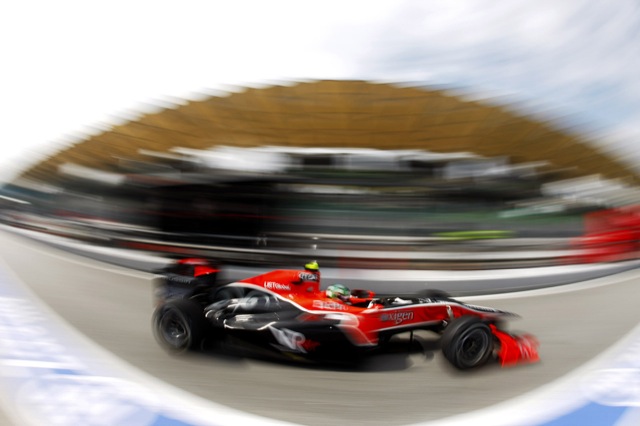 The rules and regulations pertaining to Formula One racing are fairly in-depth. The FIA release the rules to the public via their website, and just a quick scan of the PDF documents is enough to make anyone feel a little drowsy. However, the rules are important because it is these limitations that guide the sport and keep it fair for all competitors, even though some regulations seem to make the sport a little unfair for its viewers. This post will make an attempt at deciphering some of these rules, in particular the changes made for the 2007 season, due to kick off this coming weekend.
The rules and regulations pertaining to Formula One racing are fairly in-depth. The FIA release the rules to the public via their website, and just a quick scan of the PDF documents is enough to make anyone feel a little drowsy. However, the rules are important because it is these limitations that guide the sport and keep it fair for all competitors, even though some regulations seem to make the sport a little unfair for its viewers. This post will make an attempt at deciphering some of these rules, in particular the changes made for the 2007 season, due to kick off this coming weekend.
The major changes that have occurred since Brazil last year and Australia this year:
Identification:
– On board cameras must now be coloured orange for the lead driver, and yellow for the second driver. This makes identifying the drivers easier providing you can remember who is which colour.
Rule Infringements:
– If a driver infringes the rules during a practice session, the stewards reserve the right to drop the driver any number of grid slots they deem appropriate. Unless the incident is clear, the stewards will investigate only after the session has ended.
Practice Sessions:
– The first two practice sessions have been extended by thirty minutes each.
– Third cars have been abolished, but teams may run a third driver for testing purposes in the practice sessions.
Safety Car:
The safety car rules have become a little more complicated. I’ll do my best here.
– As soon as the safety car notice is displayed, the pit lane is closed. No cars may enter the pit lane unless they were already in the pit entry. Should the safety car driver deem it necessary, they may have to use the pit lane as part of the race track (if there was an accident on the start/finish straight, for example). Should this happen, no penalties will be incurred, but drivers must not stop at their boxes.
– Once all the cars have formed up behind the safety car, the pit lane will re-open.
– When the clerk of the course decides it is necessary, all lapped cars who are out of sync. behind the safety are asked to overtake the safety car and lap the circuit, rejoining the rear of the tail in position.
This bit is a little ambiguous, as it implies that they have just unlapped themselves. However, it does mean for closer competition, Spyker won’t always finish a race 32 laps down, and the lap they are on doesn’t make much of difference to the competition aspect of the sport.
– And as before, when the safety car starts the final lap before coming in, the lights are turned off. When the safety peels into the pit lane, the lead driver effectively becomes the safety car and must maintain a reasonable pace. No overtaking is permitted until the driver has passed the start/finish line.
Tyres:
 – Bridgestone have become the sole tyre supplier to all Formula One teams for 2007.
– Bridgestone have become the sole tyre supplier to all Formula One teams for 2007.
– Bridgestone will supply four sets of each specification of dry weather tyres to each team for use during the first two practice sessions of a Grand Prix. The tyres must be returned to Bridgestone before Practice 3 commences.
– At this point, each driver will be allocated a further ten sets of dry weather tyres, five of each specification, and these are to last for the rest of Grand Prix meeting.
– In the event of extreme weather or wet weather tyres being needed, teams may only use them after the circuit has been officially declared wet by the race director.
– Under normal circumstances (ie. dry) each team must use each specification of tyre during the course of the race.
Engines
– As before, engines must last two race distances. However, teams may use a different engine during Friday’s practice sessions.
– Should an engine be changed during the course of a Grand Prix weekend, the driver will be penalised ten grid slots. However, should the engine be changed twice, the driver will be penalised a further ten slots, demoting the driver to 20th at best.
Any questions? I thought so! The best way to understand F1 is to actually watch it. Reading the rules just numbs the brain, but when you see the rules in use, it becomes much clearer as what they mean and why they are in place. Feel free to ask questions in the comments, I cannot guarantee an answer, but I’ll do my best.
The official FIA Formula One Technical and Sporting Regulations can be downloaded or viewed from the FIA website.


















Add comment